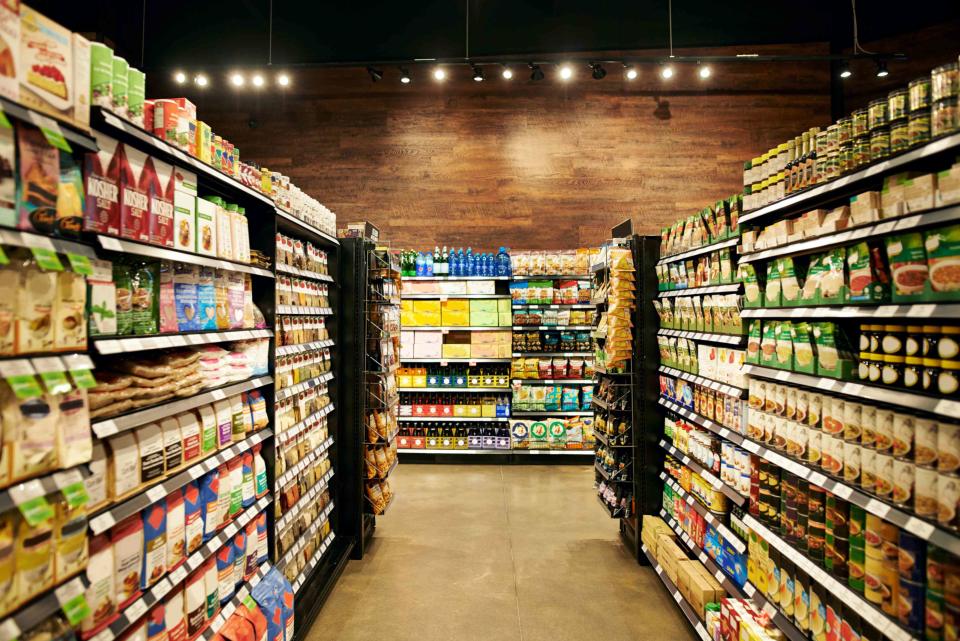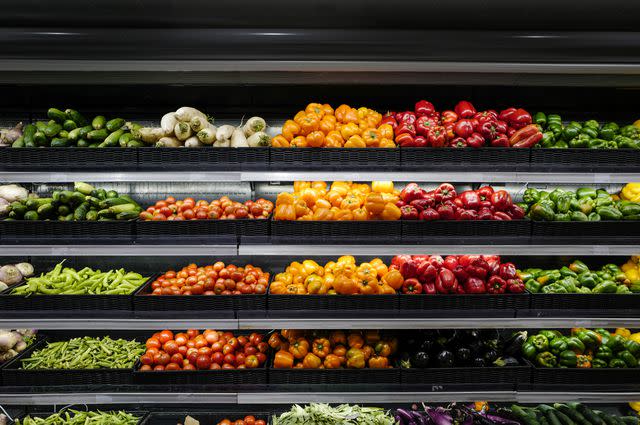Here’s What’s Really Going on With Skyrocketing Food Prices
It's not singularly about inflation.

AJ_Watt / Getty Images
Back in 1993, political activist Jimmy McMillan coined the phrase, “The Rent is Too Damn High” while running for mayor of New York, and later, governor of the Empire State. Three decades later, consumers across the country are saying the same thing about rising grocery prices.
Federal statistics bear that out. Since the pandemic began, the Federal Reserve says grocery prices have risen 25%, leaving consumers — and even President Biden — fuming over food costs. And supermarkets and big box stores are scrambling to reverse that perception.
In February, Walmart implied that consumers should expect to see lower prices. Doug McMillon, its president and chief executive, contended that certain items were lower than in 2023 — including eggs, apples, and deli snacks, although he acknowledged they remained higher for some products such as asparagus and blackberries.
Related: President Biden Is Calling Out Snack Companies for 'Shrinkflation'
Meanwhile, global home furnishings and food giant Ikea says it is cutting prices on hundreds of items. In a December email, it told consumers to look for signs reading “New Lower Price,” which have begun appearing in stores. It’s also offering weekday dining specials to members of the Ikea Family program, with meatball dinners for $3 on Mondays, and 50% off entrées on Fridays. But, effective Feb. 1, Ikea eliminated the program’s 5% across-the-board discount, meaning members were paying more for some items.
To top things off, Trader Joe’s raised the price of a conventional banana, which has cost 19 cents for more than 20 years, to 23 cents — a 20% increase.
Biden, a well-known lover of ice cream, said consumers were “being played for suckers, and that’s why we’re going to keep these guys — keep on them and get the prices down.” However, government data shows that higher food prices, for both groceries and restaurant meals, have remained stubbornly high since the pandemic began four years ago, according to analysis for Food & Wine by Donald Grimes, a regional economics specialist at the University of Michigan.
Between January 2020 and January 2024, wholesale prices for food rose an estimated 22.4%. Though they’ve come down since 2023, wholesale costs are at the second-highest level of the past 15 years, according to the government’s Producer Price Index for commodity foods.
Grimes’ analysis showed that prices for processed foods rose 22% in the four-year period from 2020 to 2024 and are the second highest it's ever been in the past 20 years.
Related: Trader Joe’s Raised the Price of This Bestselling Item by a Whopping 20%
Meanwhile, food eaten away from home, which includes all types of restaurants, is at its highest level in two decades, up 25.6% in 2020. In urban areas alone, the cost of sit-down restaurant meals is up 24.1%, to the highest index rate ever, while fast food meals across the country are up 29.6%.
Jason Gollan, owner of Common Good, a group of bakeries and a café in Traverse City, Michigan, says the wholesale prices he pays for ingredients have spiked. Pre-pandemic, he routinely paid $12 to $14 for 50 pounds of flour. “Now we’re happy when it’s under $22,” he tells Food & Wine. A 36-pound case of butter was $80 to $85; now it’s unusual to find it under $150.
That’s forced him to hike prices for baked goods: Pastries that were $3 to $5 each in 2020 are now $4 to $7. Breads, which were $7 a loaf, now cost $12; while baguettes, once $3, now sell for $5 each.

artur carvalho / Getty Images
Between January 2020 and past January 2024, wholesale prices for food rose by an estimated 22.4%. And prices for processed foods rose 22% in the four-year period from 2020 to 2024 — the second highest in the past 20 years.Actions by big retail chains like Walmart could conceivably push some prices down, says Marco Di Marino, a partner and managing director at consulting firm Alix Partners, where he oversees grocery practice. But he cautions that the big stores’ moves will not be felt across the board. “It doesn’t mean that they are super cheap on everything every day,” he says.
Related: Walmart Is Lowering Prices Back to Pre-Inflation Levels
In fact, consumers may be misleading themselves into expecting bargains. “Prices and value are often things that are viewed separately, but they actually drive each other,” Di Marino says. He admits that he rarely leaves Costco without spending $200 or $300. “There are a lot of dollars in those baskets,” he says of Costco’s shopping carts, “but anyone who shops at Costco will tell you they got tremendous values.”
Grimes sees another factor driving up consumers’ perception of higher grocery prices. In the past 15 years, many upscale consumers have gravitated to locally grown fruits and vegetables, and other organic products, which are more expensive than the mass-produced food that used to dominate grocery stores.
“What has happened over time is that the quality of food has gone up,” he says. “In my house, we no longer buy (conventional) meat and chicken, but organic meat and chicken. We don’t buy ground coffee, we buy Nespresso pods; not packaged breads, but bread from the grocery store bakery.”
Similarly, the beer market has been flooded with craft brewers, whose four-packs are usually more costly than mass-market six-packs. It’s not easy to track this evolution in government data, Grimes says, but that shouldn’t be read as inflation per se. It’s more of a shift in tastes and preferences: "The financial cost of increased tastes becomes more apparent."
In other words, America's tastes are too damn high.
For more Food & Wine news, make sure to sign up for our newsletter!
Read the original article on Food & Wine.